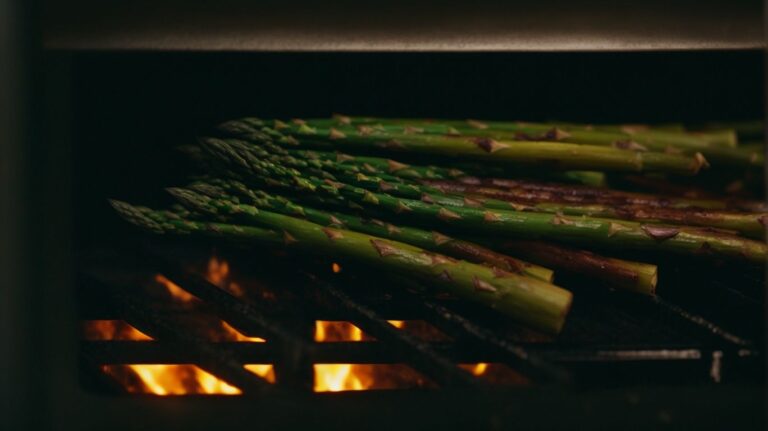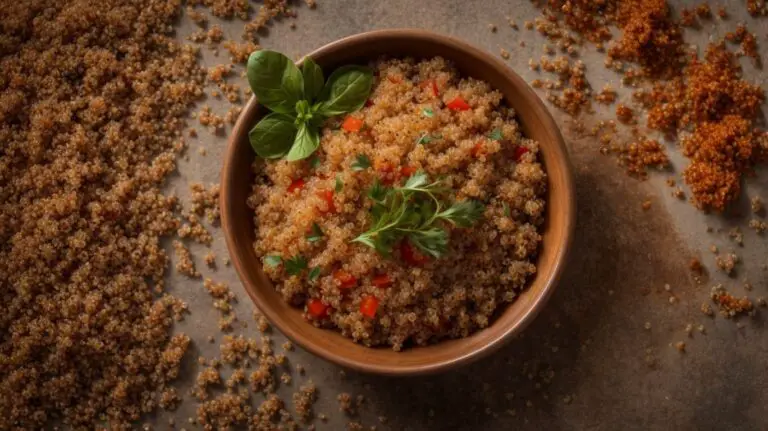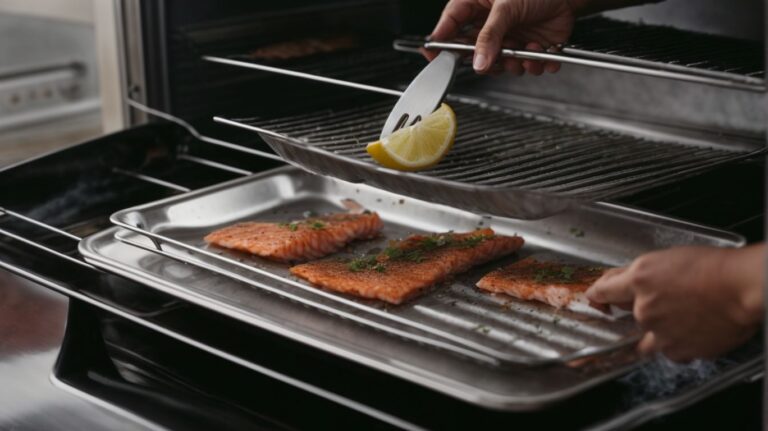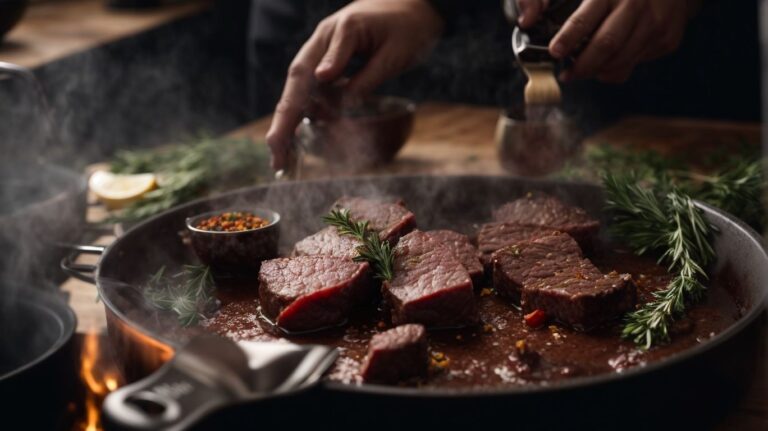How to Cook Frozen Vegetables on Stove?
Looking for a convenient and nutritious way to prepare frozen vegetables? Cooking them on the stove is the perfect solution!
In this article, we discuss the benefits of stove-cooked frozen vegetables, the types of vegetables that work best, and a step-by-step guide on how to achieve perfectly cooked veggies every time.
Whether you’re a seasoned chef or a novice in the kitchen, this article provides all the information you need to create delicious and healthy meals with frozen vegetables. So, let’s get cooking!
Key Takeaways:
Why Cook Frozen Vegetables on Stove?
Cooking frozen vegetables on the stove is a fantastic way to preserve their nutrients and achieve great texture. By using this method, you can enjoy the convenience of frozen veggies while enhancing the overall taste of your dishes.
When you cook frozen vegetables on the stove, you can control the cooking process more efficiently, ensuring that the veggies are not overcooked or mushy, as can sometimes happen with other methods. This stovetop cooking technique allows you to customize the flavors by adding various herbs, spices, and seasonings to suit your taste preferences. Preserving the nutrients in the vegetables is crucial for maintaining their health benefits, and stovetop cooking helps in achieving this by retaining more of the vitamins and minerals compared to methods like boiling.
Retains Nutritional Value
Retaining the nutritional value of frozen vegetables during stove cooking is essential to ensure that you are getting the full benefits of these nutritious ingredients. Cooking them properly on the stove can help preserve their essential nutrients and flavors.
One important factor to consider when cooking frozen vegetables on the stove is the method you choose. Steaming or sautéing veggies can help retain more nutrients compared to boiling, as some water-soluble vitamins can leach out with the cooking water.
Another technique to maintain the nutritional content is to avoid overcooking. Excessive heat exposure can break down antioxidants and vitamins. Utilizing gentle heat and minimal cooking time can help keep the nutritional value intact.
Saves Time
Cooking frozen vegetables on the stove saves you valuable time in the kitchen. With quick and efficient stove-cooking methods, you can have delicious and nutritious dishes ready in just a matter of minutes.
One time-saving technique is blanching frozen vegetables before stir-frying them. By quickly blanching, you can reduce the overall cooking time and preserve their vibrant colors and nutrients.
Another efficient method is sautéing frozen veggies directly in a skillet with a dash of olive oil and seasoning. This method cuts down on prep time, as there’s no need for thawing. Stove-cooking also allows you to multitask – while your veggies simmer, you can prepare the rest of your meal. This dual-tasking approach makes the cooking process smoother and more time-efficient.
Versatile Cooking Methods
Cooking frozen vegetables on the stove offers a range of versatile methods such as sautéing and skillet cooking.
These techniques allow you to explore different flavors and textures, making your dishes more exciting and delicious. When sautéing frozen vegetables, you can quickly cook them in a hot pan with a bit of oil, creating a tender yet slightly charred exterior for a delightful contrast. On the other hand, skillet cooking offers the option to sear the vegetables over higher heat, preserving their natural colors and crunchiness.
By using these methods, you can easily incorporate various seasonings, spices, and herbs to elevate the taste profile of your dishes. The beauty of cooking frozen vegetables on the stove lies in the flexibility it offers – whether you prefer a quick stir-fry or a slow-cooked simmer to develop richer flavors.
What Types of Vegetables Can Be Cooked on Stove?
A variety of vegetables, both frozen and fresh, can be cooked on the stove to achieve the best results. Whether you prefer the convenience of frozen veggies or the taste of fresh produce, stove cooking can elevate the flavors of different vegetables.
When cooking vegetables on the stove, it’s essential to consider the texture and taste each type offers. For example, fresh vegetables tend to retain more nutrients and have a crisper texture, while frozen vegetables are convenient and often more cost-effective.
Sauteing fresh vegetables like bell peppers and zucchini in olive oil can bring out their natural sweetness, while steaming frozen corn and peas helps preserve their vibrant color and juiciness.
Leafy Greens
Leafy greens are excellent candidates for stove cooking methods such as sautéing or skillet preparation. The quick cooking time and high heat help to retain their vibrant colors and nutrients, resulting in delicious and nutritious dishes.
When sautéing leafy greens, it’s crucial to start with a hot pan and a touch of olive oil or butter to prevent sticking and ensure even cooking. Add chopped garlic or shallots for flavor, then toss in the greens and stir constantly until they wilt slightly but remain vibrant. Season with salt, pepper, and a splash of lemon juice to brighten the flavors. Skillet preparation offers a broader cooking surface, allowing for quick cooking without overcrowding the greens.
Root Vegetables
Root vegetables like carrots and potatoes can be transformed into delectable dishes through stove cooking methods such as roasting or grilling. These techniques bring out the natural sweetness and earthy flavors of root vegetables, making them a delicious addition to any meal.
Roasting root vegetables in the oven is a popular method that caramelizes their sugars, creating a crispy exterior while keeping the interior soft and tender. This process intensifies their flavors, resulting in a rich and savory taste profile.
On the other hand, grilling root vegetables imparts a delightful smoky essence, enhancing their natural earthiness and providing a charred texture that adds complexity to the dish. Both roasting and grilling are versatile ways to cook root vegetables, allowing for endless seasoning and pairing possibilities.
Cruciferous Vegetables
Cruciferous vegetables such as broccoli and cauliflower are ideal for stove cooking due to their ability to maintain a good texture and flavor.
When cooking broccoli and cauliflower on the stove, options like blanching, sauteing, or stir-frying can help enhance their taste and texture. Blanching quickly cooks the vegetables, preserving their vibrant color and crunchiness. Sauteing in olive oil with garlic and herbs can add depth of flavor, while stir-frying with soy sauce and ginger can create a delicious umami profile. These methods also retain the nutrients present in cruciferous veggies, making them a wholesome addition to your meals.
Mixed Vegetables
Mixed vegetables, whether frozen or fresh, can be combined in a single pan on the stove. By heating them with melted butter and a sprinkle of seasoning, you can create a flavorful and colorful dish that is both nutritious and satisfying.
Stir-frying mixed vegetables on the stove is a quick and convenient way to prepare a healthy meal. The combination of different textures and flavors from the vegetables adds depth to the dish. Whether you opt for a medley of bell peppers, broccoli, carrots, and corn or prefer a mix of peas, green beans, and cauliflower, the options are endless.
How to Prepare Frozen Vegetables for Stove Cooking?
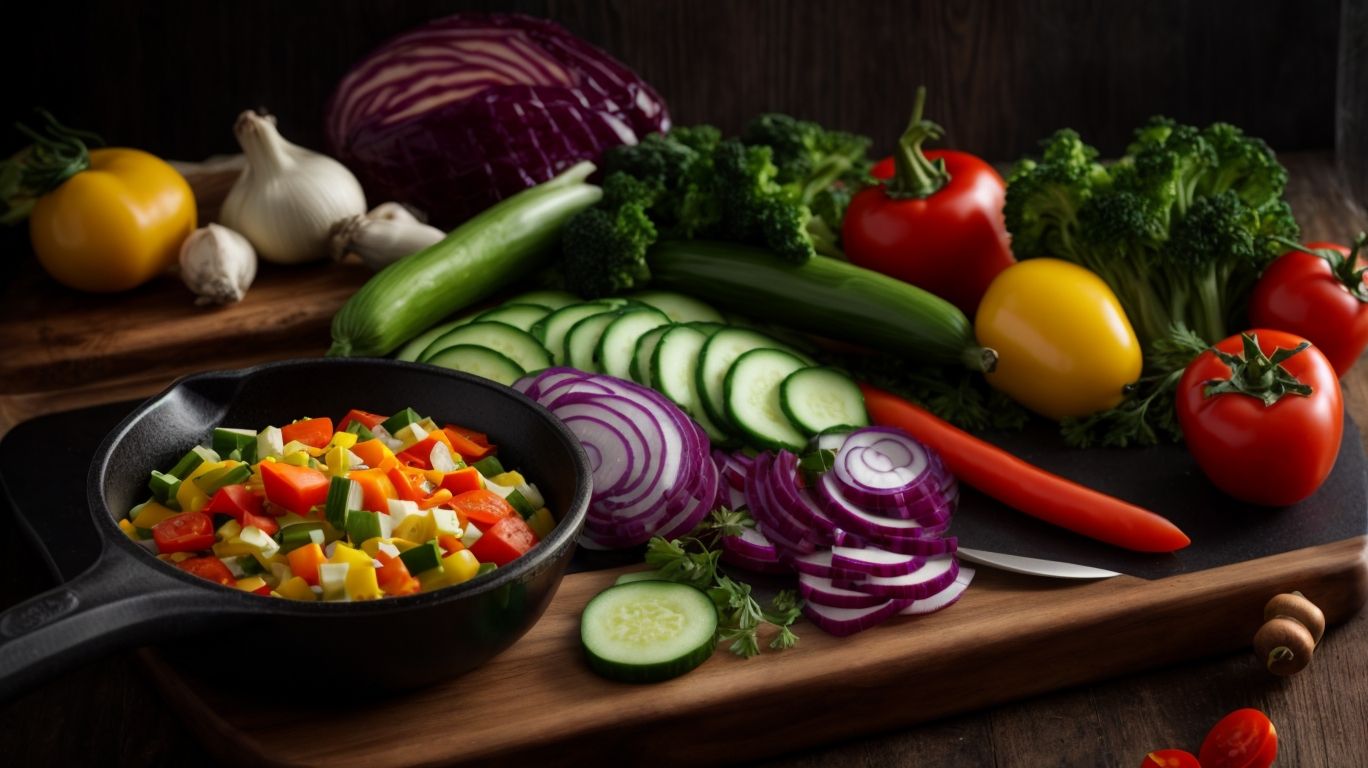
Credits: Poormet.Com – Carl Jones
Before cooking frozen vegetables on the stove, it is essential to defrost them properly to ensure a fresh and flavorful outcome. By thawing the vegetables correctly, you can enhance their taste and texture when they are cooked.
One effective method to defrost frozen vegetables is to place them in the refrigerator overnight. This gradual thawing process helps maintain the vegetables’ integrity and prevents them from becoming mushy during cooking. Remember not to refreeze the vegetables once they are thawed, as this can affect their quality and safety.
You can also defrost the vegetables by running cold water over them in a colander for a quicker thaw. This method is ideal for last-minute meal preparations when you need the vegetables thawed promptly.
Thawing Methods
Thawing frozen vegetables before stove cooking is crucial for achieving the best results. Whether using water or other thawing methods, ensuring that the vegetables are properly defrosted can significantly impact the final taste and texture of your dishes.
One effective way to thaw frozen vegetables is through refrigeration. Simply transfer the vegetables from the freezer to the refrigerator the night before you plan to cook them. This gradual thawing process helps retain the vegetables’ nutrients and prevents them from becoming mushy.
Another quick method is the microwave thawing technique. Use the defrost setting on your microwave, following the appliance’s instructions to avoid partially cooking the vegetables. It’s a convenient option for last-minute meal preparations.
Seasoning and Flavoring Options
Seasoning and flavoring frozen vegetables before stove cooking can elevate their taste and appeal. Adding a pinch of salt, black pepper, or other seasonings can enhance the natural flavors of the vegetables and create a delicious dish.
Experimenting with different seasonings such as garlic powder, onion powder, paprika, or even a dash of cayenne pepper can add depth and complexity to the overall flavor profile.
Incorporating fresh herbs like parsley, basil, or dill towards the end of the cooking process can provide a burst of freshness and vibrant aroma to the dish.
A squeeze of lemon juice or a drizzle of olive oil just before serving can further enhance the flavors and create a well-balanced and satisfying vegetable dish.
What Equipment Do You Need for Cooking Frozen Vegetables on Stove?
When cooking frozen vegetables on the stove, you will need basic kitchen equipment such as a pan with a lid. This setup helps in controlling the heat and steam, ensuring that your vegetables are cooked evenly and retain their natural flavors.
Along with a pan with a lid, you may also require a wooden spoon or spatula for stirring the vegetables gently without breaking them apart. The lid helps trap the steam inside, allowing the vegetables to cook through without losing their nutrients. Having a timer to keep track of cooking times can help prevent overcooking. To enhance the flavors, you might want to have some salt, pepper, or herbs handy for seasoning the vegetables to your taste as they cook.
Step-by-Step Guide for Cooking Frozen Vegetables on Stove
Follow this step-by-step guide to cook frozen vegetables on the stove and create delicious dishes. From initial preparation to final serving, each step is crucial in ensuring that your vegetables are cooked to perfection and ready to be enjoyed.
Once you have chosen your favorite blend of frozen vegetables, the first step is to heat a skillet over medium heat. Add a splash of oil or butter to the pan and allow it to melt before gently placing the frozen vegetables in the skillet. Stir occasionally to ensure even cooking and prevent sticking. Stirring is essential in guaranteeing that all of the vegetables cook uniformly.
As the vegetables cook, consider adding seasonings such as salt, pepper, garlic powder, or herbs to enhance the flavor profile. Experimenting with different seasonings can elevate the taste of your dish and cater to your preferences. Remember to adjust the cooking time based on the thickness of the vegetables; firmer vegetables may require a longer cooking time than softer varieties.
Once the vegetables are tender and cooked through, remove the skillet from the heat and serve the dish immediately. Whether as a standalone side or as a complement to a main course, your freshly cooked frozen vegetables are sure to delight your taste buds.
Preheating the Pan
Preheating the pan before adding frozen vegetables is essential to ensure even cooking and flavor development. By melting a bit of butter in the pan and heating it to the right temperature, you can create a perfect base for cooking your vegetables.
When the pan is properly preheated, it allows the vegetables to quickly sear and caramelize on the outside while staying tender on the inside. This process helps to retain the natural flavors and nutrients of the vegetables, resulting in a more vibrant and delicious dish.
By using butter, you not only add richness and depth of flavor to the vegetables but also help in achieving a nice crispy texture. The butter aids in conducting heat evenly across the pan’s surface, ensuring that each vegetable piece gets the right amount of heat for optimal cooking.
Adding Vegetables to the Pan
Adding frozen vegetables to the preheated pan with a splash of water can kickstart the cooking process. This method helps in creating steam that cooks the vegetables evenly and enhances their natural flavors.
As the water starts to simmer and create steam, the vegetables trapped inside the pan begin to release their moisture, intensifying their taste and ensuring a succulent texture. The steam gently envelops each piece, locking in nutrients and preserving the vibrant colors of the veggies. This gentle cooking approach is ideal for retaining the nutritional value of the vegetables, ensuring that they are not stripped of their vitamins and minerals like in other harsher cooking methods. The steam also aids in maintaining the overall crunchiness and brightness of the vegetables, avoiding the mushiness that can result from overcooking.
Cooking Time and Temperature
Determining the right cooking time and temperature for frozen vegetables on the stove is crucial for achieving the desired texture and taste. By following specific guidelines and adjusting the heat levels as needed, you can ensure that your vegetables are perfectly cooked.
Cooking frozen vegetables on the stove requires careful management of both time and temperature. Different vegetables may have varying ideal cooking times and heat requirements to retain their nutrients and flavors.
- It’s essential to start by heating the pan properly and then adjusting the heat to the appropriate level. This allows for even cooking without burning or overcooking the veggies.
- Ensure you stir occasionally to distribute the heat evenly.
Monitoring the cooking process is key. Monitor the vegetables to prevent them from becoming mushy or undercooked. This attention to detail can make a significant difference in the final taste and texture.
Testing for Doneness
Testing for doneness is a crucial step when cooking frozen vegetables on the stove.
One effective method to determine the readiness of frozen vegetables is by using your fork. Pierce a piece of vegetable with a fork; if it goes in smoothly but with a slight resistance, they are likely done. The color change is also a good indicator; vibrant colors usually signify readiness. Remember to taste a sample to ensure the texture is to your liking. By intermittently checking and maintaining the lid on the pot, you can lock in essential steam, preserving the flavors within and enhancing the overall taste of the dish.
Tips for Perfectly Cooked Frozen Vegetables on Stove
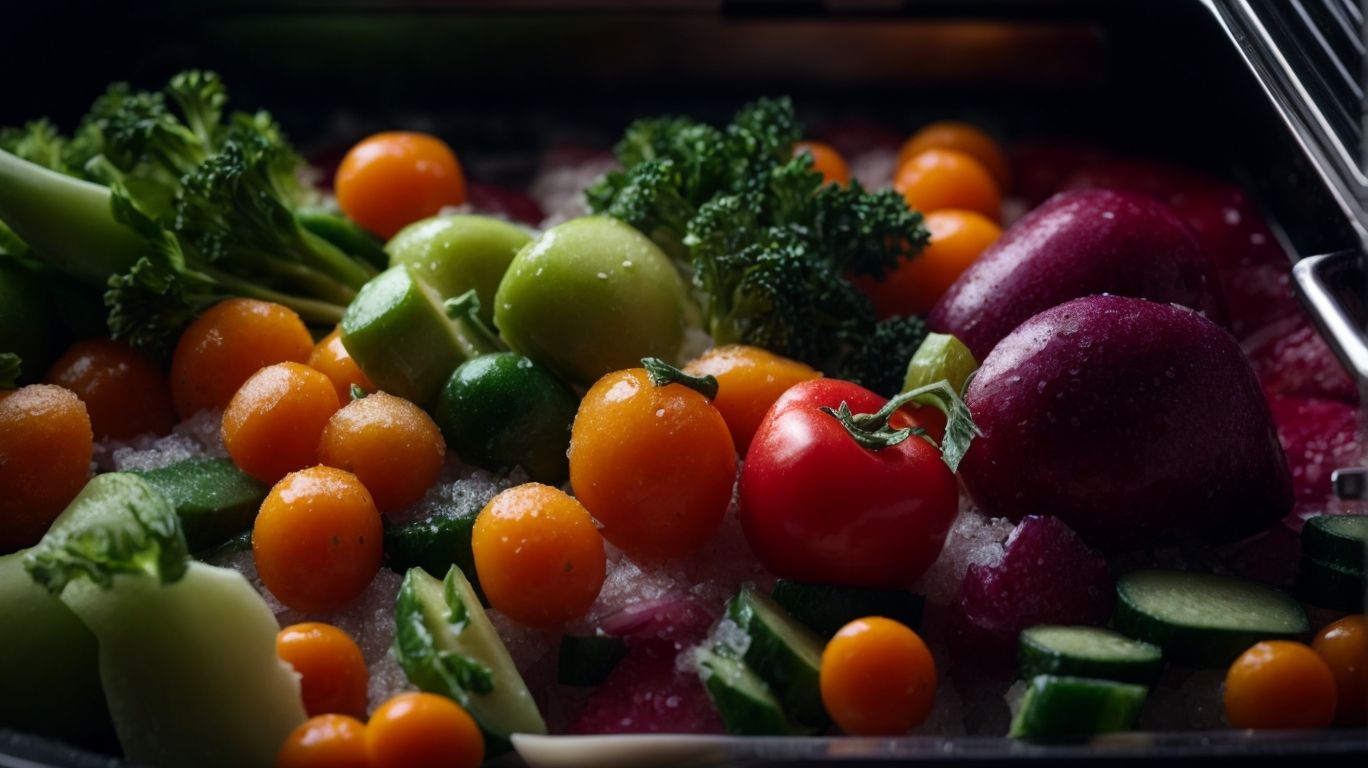
Credits: Poormet.Com – Jonathan Lopez
Achieve perfectly cooked frozen vegetables on the stove with these expert tips. From seasoning to monitoring cooking times, these suggestions will help you create dishes that are not only delicious but also retain the fresh taste of the vegetables.
When cooking frozen vegetables on the stove, it’s essential to choose a high-quality product that is as fresh as possible. Look for vegetables that are individually frozen rather than clumped together. Before cooking, allow the frozen vegetables to thaw slightly at room temperature for about 10-15 minutes to promote even cooking.
Seasoning plays a vital role in enhancing the flavor of your vegetables. Experiment with different herbs, spices, and seasonings to find combinations that complement the natural taste of the vegetables. Consider options like garlic, lemon zest, or a sprinkle of parmesan cheese to elevate the dish.
How to Store and Reheat Leftover Cooked Frozen Vegetables?
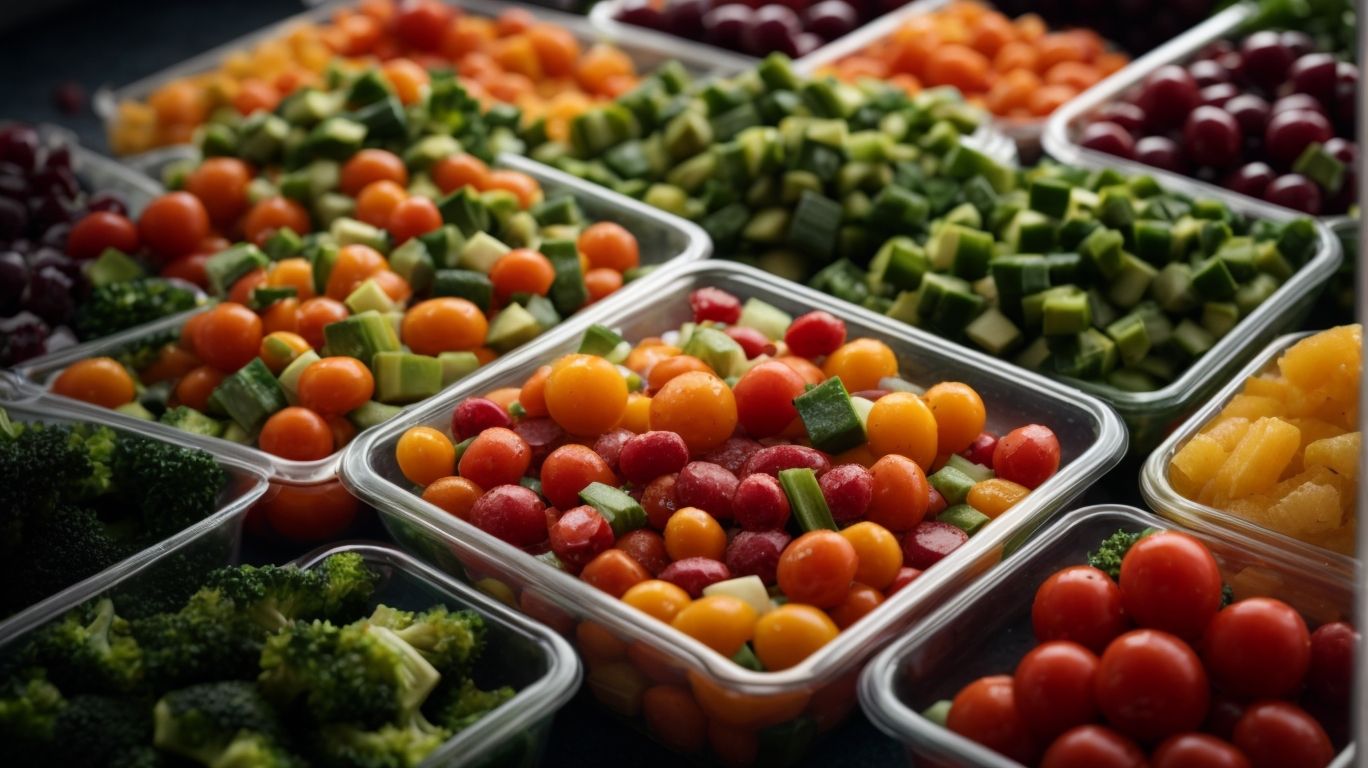
Credits: Poormet.Com – Roger Young
Learn the best methods for storing and reheating leftover cooked frozen vegetables to maintain their taste and texture. Whether refrigerating or freezing, proper storage techniques can help preserve the flavor of your dishes for future enjoyment.
When storing cooked frozen vegetables in the refrigerator, ensure they are tightly sealed in an airtight container to prevent moisture loss and freezer burn. Labeling the containers with the date can help in keeping track of freshness.
For longer-term storage, freezing is ideal. Before freezing, blanching the vegetables can help maintain their color and texture. Thaw them in the refrigerator overnight for even reheating. When reheating, avoid overheating to prevent mushiness; a gentle steaming method works best to retain the flavors and nutrients.
Conclusion
In conclusion, cooking frozen vegetables on the stove is a convenient and nutritious way to enjoy delicious dishes. By following proper cooking methods and utilizing fresh ingredients, you can create meals that are not only tasty but also rich in essential nutrients.
When you cook frozen vegetables on the stove, it helps preserve their natural flavors and nutrients better than other cooking methods. Stovetop cooking allows you to retain the vegetables’ texture and crunchiness, resulting in a more satisfying eating experience. By controlling the cooking process on the stove, you can ensure that the vegetables are cooked to perfection without losing their nutritional value.
Frequently Asked Questions
1. How do I properly thaw frozen vegetables before cooking them on the stove?
It is recommended to thaw frozen vegetables in the refrigerator overnight before cooking them on the stove. If you are short on time, you can also place the frozen vegetables in a bowl of cold water for 30 minutes to an hour.
2. Can I cook frozen vegetables directly on the stove without thawing them first?
Yes, you can cook frozen vegetables directly on the stove without thawing them first. However, it may take longer for them to cook and they may not have the same texture as thawed vegetables.
3. What is the best way to season frozen vegetables while cooking them on the stove?
The best way to season frozen vegetables while cooking them on the stove is to add them to a pan with heated oil or butter and then sprinkle your desired seasonings on top. This allows the seasonings to evenly coat the vegetables and enhance their flavor.
4. How can I prevent frozen vegetables from getting soggy when cooking them on the stove?
To prevent frozen vegetables from getting soggy, make sure to cook them on high heat and avoid overcrowding the pan. This helps to quickly evaporate any excess water and results in crispier vegetables.
5. Is it safe to cook frozen vegetables on the stove without any added liquid?
Yes, it is safe to cook frozen vegetables on the stove without any added liquid. Frozen vegetables already contain water and as they cook, they release more liquid which helps to prevent them from sticking to the pan.
6. Can I use a non-stick pan to cook frozen vegetables on the stove?
Yes, you can use a non-stick pan to cook frozen vegetables on the stove. This can help to prevent the vegetables from sticking to the pan and makes for easier clean-up afterwards. Just be sure not to use metal utensils that can scratch the non-stick surface.


